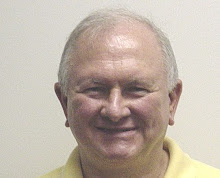Blarney: Dave, did I see you coming from one of those TEA parties last week?
Dave: Yes, you did, Blarney.
Blarney: What is that all about?
Dave: Well, you know TEA stands for Taxed Enough Already. It’s a play on words honoring the Boston Tea Party.
Blarney: Are you guys anti-government terrorists?
Dave: No, Blarney, that is ridiculous. We are for Constitutional government as envisioned by the founding fathers.
Blarney: Isn’t that what we have now?
Dave: Unfortunately, no. According to the Constitution, the federal government power is limited and enumerated. The real power belongs to the states and the people.
Blarney: You mean like anarchy?
Dave: No, Blarney. The founders wanted to strike a balance between statism and anarchy. They founded a representative Republic that was full of checks and balances to prevent power from accumulating at either end of the political spectrum.
Blarney: Like what?
Dave: Well, like the clear division of responsibility of the three branches of government. The legislative branch (Congress) was to create all laws. This branch would be bi-cameral with both a Senate and a House of Representatives. The house would have representation based on population. The Senate would have two Senators for every state, regardless of population. Both houses would have to agree on a bill before it was sent to the President for signature.
Blarney: Like the Health care legislation.
Dave: Well, sort of. Anyway, even if both houses of Congress agreed on a bill, the President could still veto it. And if he did, the Congress could override the veto with a super majority. The president could not make law – he could only sign the bill into law.
Blarney: What about the Executive Order that President Obama used to get the health care bill through?
Dave: That is not a law. Constitutionally, an executive order would only affect the Executive Branch. There is nothing to prevent the president from issuing an executive order cancelling the last one. He does not have a specified process to go through like the process specified for making a law. That process is a protection for the people against an arbitrary dictatorship ruled by a series of “executive orders”.
Blarney: I never thought of that.
Dave: The founders thought about a lot of things that most people today do not realize.
